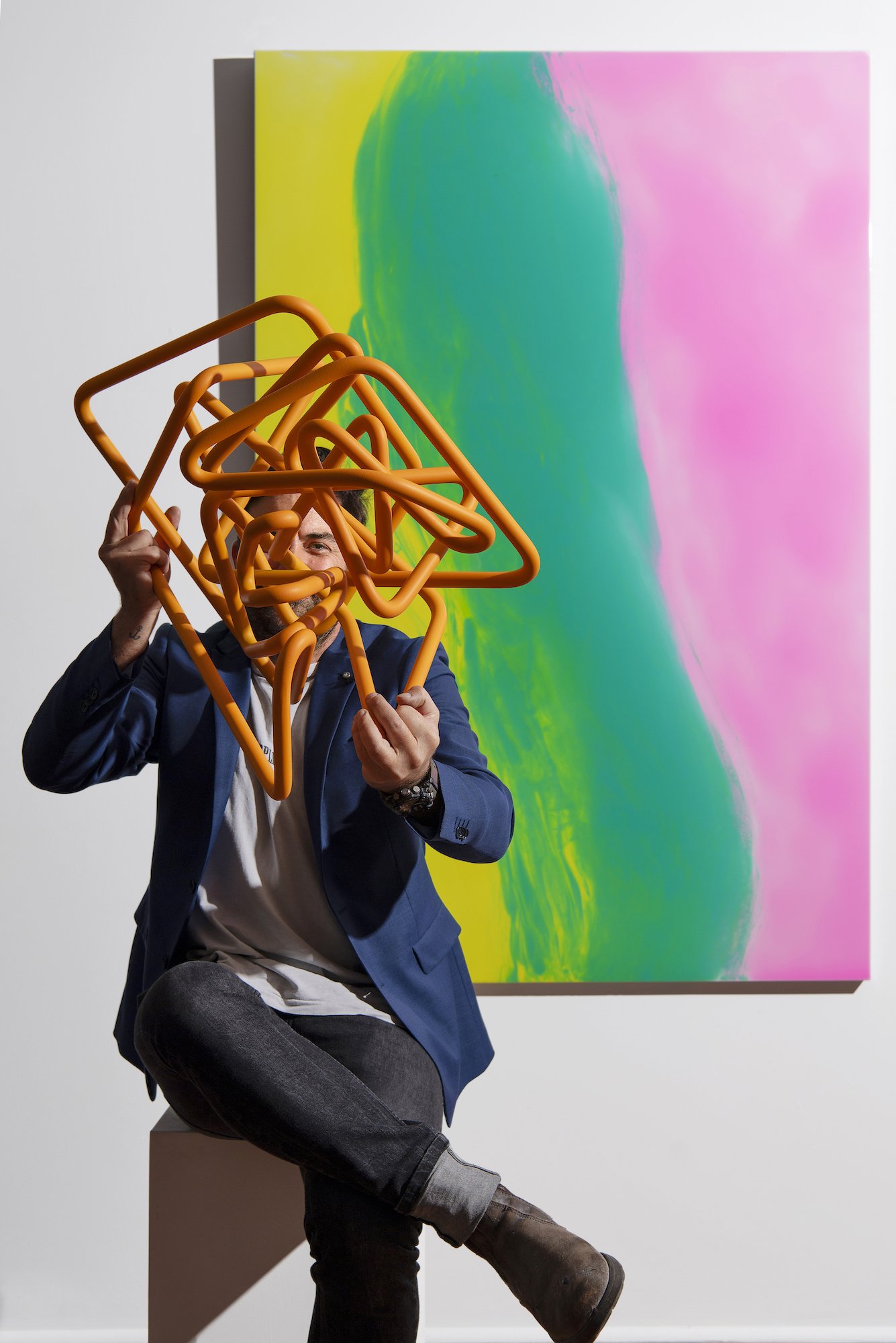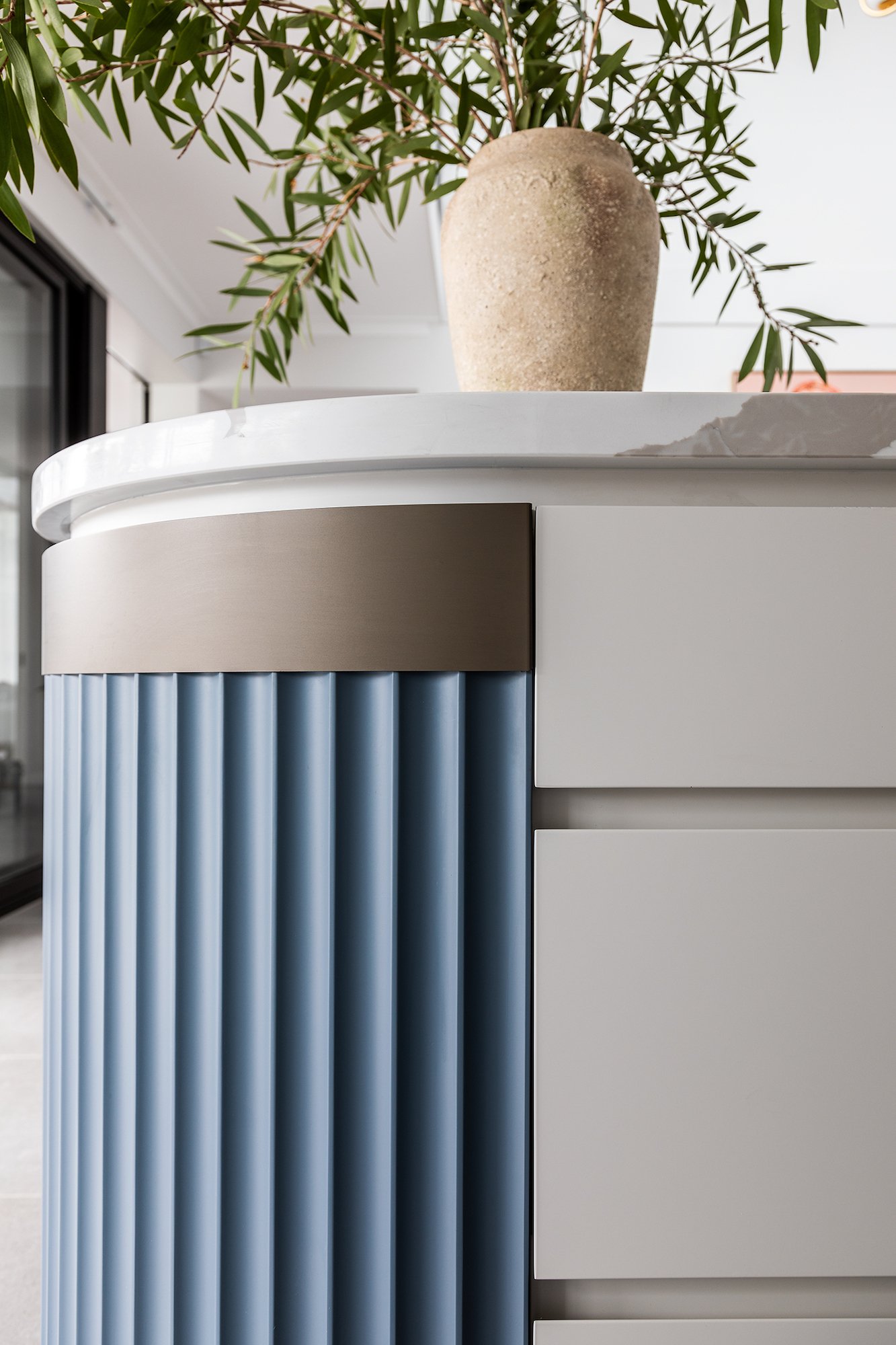Fibre to the mode
When it comes to rugs, the choice of material is key to cause and effect for floors.
In partnership with TEMPLE FINE RUGS • Words ELIZABETH CLARKE
To create the ultimate stylish and inspiring space, start with a rug – but not just any ordinary one. Choose a floor rug made from fibres that enhance your room both visually and underfoot. It acts as an anchor, drawing together various design elements and providing a sense of cohesion.
"A beautifully crafted and high-quality floor rug depends largely on its materials," says Chris Hoyne from Temple Fine Rugs. "Currently, there are many poorly made rugs being sold in large quantities both locally and globally, and they pose environmental, social, and consumer challenges. Understanding the difference between natural, durable protein fibres – primarily wool and silk – and inferior, toxic, low-quality synthetic cellulosic fibres is the most important step in choosing a floor rug that lasts, is comfortable to live with, and enhances the overall look and feel of a room."
Wool, Hair & Fur Fibres
Wool and other protein fibres derived from animals, including cashmere, alpaca and goat hair, have always been and continue to be the premium fibres for high-quality floor rugs. These fibres, although they come in different qualities, are generally unmatched for durability. This resilience, combined with their natural beauty, cleanability and longevity, makes them the most desirable and revered choice for luxurious rugs and carpets.
Different regions, climates and sheep breeds contribute to a diverse range of wool qualities, each with unique properties and uses. The best wools for rug-making come from traditional rug-weaving countries, including Iran, Turkey, Afghanistan, Morocco, the Caucasus, and the Himalayas.
“These wools have a long staple length and are relatively coarse, featuring hard, shiny cuticles,” Chris explains. “While they may feel a bit scratchy and wiry, making them unsuitable for clothing, they are very durable. With use they become glossier, naturally repel dirt and do not absorb liquids well, making them ideal for rugs.”
Across the Tasman, New Zealand produces wool as beautiful as Australian merino but from flocks bred for specific industries. "Merino wool is too fine for rug-making, which reduces its resilience and durability under foot traffic," Chris says. "New Zealand wool is very white and consistent, making it ideal for accurate dye-batching and machine processing. However, it lacks the rustic natural character found in the best Asian wools. Generally, the premium wools for rugs come from traditional rug-weaving countries and are hand-spun. To meet export demand and pricing requirements, these weaving countries also import wools from New Zealand, India and Argentina for more mass-market rugs."
IMAGE: Contemporary colours and designs traditionally woven in time-honoured Persian wool.
SNAPSHOT
Durability Suitable for high-traffic living areas. Resilience The natural spring in the fibre resists flattening and crushing. Natural beauty Maintains its appearance over time, even with age and wear. Cleanability Can be wet washed and spot cleaned. Longevity Many wool rugs survive for more than 100 years. Price Range from mid-to-high. Value for money Simply the best, offering exceptional quality. Environmental and social Made from natural, non-toxic materials that are recyclable and compostable.
Silk Fibres
Natural silk has a long history as the most luxurious fibre and marvel of nature. Its remarkable strength, natural lustre, fine texture, softness and warmth to the touch make it a material that piques curiosity.
"Distinguishing authentic silk from the many imitation fibres in the rug market can be challenging," warns Chris. “There is only one true type of silk – a protein fibre that comes from silkworms. Anything else that resembles silk or has ‘silk’ in its name is something entirely different and significantly inferior. This is similar to how ‘pleather’ is simply vinyl and almond milk is not real milk. These marketing terms can confuse consumers.”
Silk is a luxurious natural protein fibre produced from the cocoons of silkworms, specifically the larvae of the Bombyx mori moth, which feed on mulberry leaves. Silk undergoes a meticulous production process known as sericulture, where the cocoons are harvested and the fibres carefully unwound.
Incredibly, silk maintains a natural gloss and lustre throughout its lifespan, and stands out for its impressive strength despite its lightweight and fine texture. "Silk feels incredibly soft underfoot and the natural spring in the fibres resists flattening and crushing," says Chris. This combination of functionality and elegance makes silk a timeless and opulent choice for floor rugs.
IMAGE: Pure hand-spun raw silk with a luxurious lustre that lasts.
SNAPSHOT
Durability Silk is almost as durable as wool; however, its very fine individual fibres make it more susceptible to physical damage from harsh scrubbing or heavy foot traffic. Resilience The natural spring in the fibres helps resist flattening and crushing. Natural beauty Silk maintains its gloss and lustre even as it ages, appealing to the senses. Cleanability It can be wet washed and spot cleaned. Longevity Many silk rugs can last for several decades with normal use. Price Ranges from mid-to-high. Value for money Offers great value at a luxury price. Environmental and social Silk is natural, non-toxic, recyclable and compostable.
Semi-synthetic Fibres (Rayon)
Synthesised from plant pulp, semi-synthetic fibres are designed to imitate silk's gloss but are misleadingly marketed using the word 'silk'.
"They are absolutely unrelated to real silk, which is a natural protein fibre, and more closely related to cotton," says Chris. "Viscose, Art Silk (Artificial Silk), Bamboo Silk, Banana Silk, Cactus Silk, Tencel and Lyocell are naturally dull but chemically polished for lustre, have poor resilience and are easily damaged by agitation. Rayon is very absorbent and soils quickly and, like denim, loses colour and sheen quickly in areas of agitation and friction. Even carefully spot cleaning a mark is likely to cause permanent texture damage."
Cellulosic browning is another downside of these fibres. Similar to how a cut apple turns brown when left out, these fibres also brown as they dry.
“If a glass of clean water spills on a rayon rug, it can leave a noticeable watermark as it dries, making spot cleaning nearly impossible,” says Chris.
SNAPSHOT
Durability Very delicate. Any rubbing, foot traffic, dragging, spot cleaning or wetting may cause permanent texture changes and/or colour loss. Resilience Rayon fibre is made similarly to fairy floss and has very little tensile strength or natural spring. Once the pile of a rayon rug has been flattened by foot traffic or furniture, it remains flat and cannot be restored. Natural beauty It can look and feel like real silk when it is new. Cleanability Only use a light vacuum. Longevity Loses its texture, sheen and colour over time, even though the fibres remain quite strong. Price Mid-price point. Value for money Low quality – while it may not be inexpensive, it has a short lifespan. Environmental and social Rayon production significantly contributes to global deforestation. The manufacturing process releases toxic carbon disulphide, which has been shown to seriously harm the health of rayon workers in developed countries. Additionally, emissions from rayon plants may pose health risks to people living nearby and their livestock.
IMAGE: Hand-spun linen, a bast fibre, ready for balling in Nepal.
Cellulosic Bast Fibres
Plant-derived fibres such as cotton, linen, jute, sisal, hemp, agave, flax and aloe are used for various products, ranging from inexpensive front door mats to affordable silk substitutes. Their chunky, woody textures and natural, neutral colours have a long history in floor rug design, particularly in the effortless elegance of Hamptons interiors, the clean lines of mid-century modern, and the relaxed vibe of casual beachside homes. Natural fibres like sisal and hemp can hold up beautifully in spaces such as a dining room, living room and entryway. "These fibres can look and behave similar to rayon but are derived from plants, so they have greater structure and durability but can feel rough or prickly to the touch," says Chris. "They are generally much cheaper than premium options, so consumers have lower expectations regarding durability and cleanability. While they may not last as long, they are appreciated for being honest and natural.”
SNAPSHOT
Durability Generally durable, these natural woody fibres appear worn-in rather than worn-out as they age. However, they are prone to fading in strong sunlight and high-traffic areas. Resilience The fibrous structure of these materials possesses excellent resilience. Natural beauty Earthy organic with a natural appeal. Cleanability Can be professionally wet cleaned. Watermarks appear easily if spot cleaned. Stain removal may be challenging. Longevity Loses texture, sheen and colour even though the fibre stays quite strong. Price Ranges low-to-mid. Value for money Good. Environmental and social The production and processing of cellulosic bast fibres consume significant water; however, these fibres are natural and biodegradable.
IMAGE: A custom rug sample being hand-knotted in Kathmandu.




































